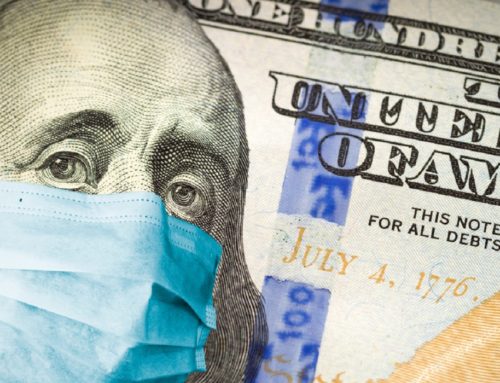On March 11, 2021, President Biden signed into law the American Rescue Plan Act of 2021 (“ARPA”), a $1.9 trillion economic stimulus package and comprehensive COVID relief bill that provides a wide range of assistance to businesses and individuals. As with the COVID-related Acts preceding it, ARPA facilitates much of this assistance through changes to the federal tax code. This blog post summarizes the highlights of many of those changes.
The summaries below briefly describe complex tax code provisions. If any specific item is of particular interest, you should consult a tax attorney or your tax advisor for a more detailed understanding. All “Section” references are to the Internal Revenue Code of 1986, as amended, unless otherwise indicated.
Tax Provisions For Businesses.
- Employee Retention Credit (ERC). The Coronavirus Aid, Relief and Economic Security (CARES) Act added Section 3134 which created the ERC as a refundable tax credit giving eligible employers a credit against payroll taxes. The original rules covering periods in 2020 provided a 50% tax credit against certain “qualified wages” paid by employers. The ERC was later expanded to 70% for the first two quarters of 2021.
ARPA extends the ERC from June 30, 2021 until December 31, 2021, with the 70% rate continuing during the extended period. ARPA also does the following with regard to the ERC during the extended period:
- Continues to allow for up to $10,000 in qualified wages per employee for any calendar quarter. This means an employer would potentially have up to $40,000 in qualified wages per employee through 2021.
- Creates a new category of eligibility for a “recovery startup business,” i.e., a business that began operations after February 15, 2020, with average annual gross receipts for an applicable period not exceeding $1,000,000. Such businesses are eligible for up to $50,000 in ERCs during each quarter of the extended period.
- Allows the credit to be claimed against only the employer portion of the Medicare tax (1.45%). For all periods prior to this, the ERC is claimed against the 6.2% employer portion of the Social Security tax.
- Continues the gross receipts decline requirement of 20% as measured against the same quarter in 2019. Employers with up to 500 full-time employees can claim the credit for all employees. Employers with more than 500 full-time employees cannot claim the ERC with respect to employees that are performing services solely because of the changed circumstances due to the pandemic.
- Allows a “severely financially distressed” employer who has suffered a decline in gross receipts of 90% or more as measured against the same quarter in 2019 to treat all wages (up to the $10,000 per employee limitation) paid during those quarters as qualified wages, including an employer with over 500 employees.
- Paycheck Protection Program (PPP). ARPA allocates an additional $7,250,000,000 of funding to the PPP. Although ARPA did not extend the application period, on March 30 President Biden signed a bill extending the deadline for borrower applications from March 31 to May 31, and for lender processing until June 30. In addition, ARPA adds the following entities to those eligible for PPP loans:
- “Additional covered nonprofit entities,” which are organizations listed in Section 501(c) other than those in Sections 501(c)(3), 501(c)(4), 501(c)(6), or 501(c)(19), if: (i) the organization employs no more than 300 employees; (ii) not more than 15% of its receipts are from lobbying activities, and lobbying activities comprise not more than 15% of the organization’s activities; and (iii) the cost of lobbying activities does not exceed $1,000,000 during the most recent tax year that ended prior to February 15, 2020;
- Section 501(c)(3) nonprofit and veterans’ organizations with up to 500 employees, and Section 501(c)(6) nonprofit organizations (business leagues, chambers of commerce, real estate boards, boards of trade and professional football leagues);
- Domestic marketing organizations with no more than 300 employees per physical location; and
- Internet-only news and periodical publishers with no more than 500 employees.
ARPA provides that if an employer uses PPP loan proceeds to pay COBRA premium subsidies (see below), and claims the employer’s tax credit for COBRA premium assistance, such PPP loan amounts are still eligible for loan forgiveness.
- COBRA Premium Subsidy. Under ARPA, assistance-eligible individuals (AEIs) may receive a 100% subsidy of COBRA premiums from their former employers for any period of COBRA coverage during the period beginning on April 1, 2021 and ending on September 30, 2021. An AEI is a COBRA qualified beneficiary (i.e., employee, former employee, covered spouse, or covered dependent) who is eligible for and elects COBRA coverage due to a qualifying event of involuntary termination of employment or reduction of hours.
Eligibility may end earlier if the qualified beneficiary’s maximum period of coverage ends before September 30, 2021, or if the qualified beneficiary becomes eligible for coverage under another group health plan (other than coverage consisting only of excepted benefits, or coverage under a health flexible spending arrangement or qualified small employer health reimbursement arrangement) or Medicare.
While the burden imposed by ARPA falls heavily on employers, an employer will be allowed a refundable quarterly tax credit against the Medicare payroll tax equal to the COBRA premium amounts subsidized by the employer
- Exclusion for Employer-Provided Dependent Care Assistance. An eligible employee’s gross income generally does not include amounts paid by an employer for dependent care assistance for the employee under a qualified dependent care assistance program (DCAP). Pre-ARPA, the amount that could be excluded from an employee’s gross income under a DCAP was not more than $5,000 per year, or $2,500 in the case of a separate return by a married individual, subject to certain limitations. For 2021 only, the exclusion for employer-provided dependent care assistance under Section 129 is increased from $5,000 to $10,500, and from $2,500 to $5,250 in the case of a separate return filed by a married individual.
- Economic Injury Disaster Loans. Under ARPA, eligible small businesses may receive a targeted economic injury disaster loan (EIDL) from the Small Business Administration. Amounts received as targeted EIDLs are not included in the recipient’s gross income. In the case of a partnership or S corporation that receives targeted EIDL advances, any amount excluded from income is treated as tax-exempt income for purposes of Section 705 and Section 1366, and will be allocated to the partners or shareholders and increase their bases in their partnership interests or stock. The IRS will prescribe rules for determining a partner’s distributive share of the advance for purposes of Section 705. (Applies on the date of enactment, 3/11/2021).
- Restaurant Revitalization Grants. Under ARPA, eligible restaurants, food trucks, and similar businesses may receive restaurant revitalization grants from the Small Business Administration. Amounts received as restaurant revitalization grants are not included in the recipient’s gross income. The analysis with regard to the tax treatment by partnerships and S corporations is the same as for EIDLs, discussed above. (Applies on the date of enactment, 3/11/2021).
- Deduction for Compensation to Employees of Publicly Held Corporations. A publicly held corporation’s compensation deduction is limited to $1,000,000 per year for compensation paid to any “covered employee.” (Section 162(m)(1)) Under pre-ARPA law, the definition of “covered employee” included the corporation’s principal executive officer, principal financial officer, the three other highest-paid employees, and anyone who was in one of those categories for any preceding tax year that began after December 31, 2016. (Section 162(m)(3)).
For tax years beginning after December 31, 2026, the above rule is changed to provide that “covered employee” includes the eight other highest-paid employees, rather than the three other highest-paid employees. However, the above rule regarding employees who were in one of the covered employee categories in preceding years does not apply to employees who are covered employees only because of the new rule.
- Paid Sick and Family Leave Credits. ARPA extends and modifies the payroll tax credits for qualifying sick leave and family leave wages. Both credits were initially provided by the Families First Coronavirus Response Act (FFCRA), and first applied to eligible wages paid from April 1, 2020, through December 31, 2020. In December of 2020 the Consolidated Appropriations Act of 2021 (CAA) extended the credits, with some modifications, to apply to wages paid through March 31, 2021.
ARPA further extends both the paid sick leave credit and paid family leave credit to apply to wages paid through September 30, 2021. Beginning with wages paid on April 1, 2021, ARPA makes the following modifications to both credits:
- The credits are applied against the Medicare portion of payroll taxes, instead of the Social Security portion, and applied against all employees, not just employees to whom qualifying leave wages are paid. The credits continue to be refundable.
- ARPA allows employers who voluntarily provide 80 hours of emergency paid sick leave, and 12 weeks of emergency family leave, beginning after March 31, 2021, to claim the tax credits, thereby resetting the employee’s available leave time regardless of whether the employee used leave previously or has exhausted leave.
- Reasons for eligible leave are expanded to include obtaining the COVID-19 vaccination or recovering from an illness related to immunization.
- The credits are increased by both the amount of the Social Security taxes paid and Medicare taxes paid with respect to eligible wages, instead of just the Medicare taxes. The credits are increased by the amounts of certain collectively bargained pension and apprenticeship program benefits. The credits continue to be increased by qualified health plan expenses, but under clarified rules.
- Rules are provided that coordinate the credits with second draw Payroll Protection Program loans and certain government grants.
- The no-double benefit rule, which disallows claiming both: (i) either of the sick or family leave credits, and (ii) the income tax credit for family or medical leave, is expanded to include similar coordination with certain other income and payroll tax credits.
- An employer is ineligible for the credits if, in providing paid leave, the employer discriminates in favor of highly compensated or full-time employees or on the basis of employment tenure.
- For the sick leave credit, effective beginning with wages paid on April 1, 2021, in determining whether the 10-day limit on eligible wages is complied with, only days after March 31, 2021, are taken into account.
- For the family leave credit: (i) the per-employee limit of wages taken into account is raised from $10,000 to $12,000; (ii) reasons for eligible leave are expanded to include any qualifying reasons for taking paid sick leave; and (iii) the two-week waiting period has been eliminated.
Tax Provisions For Individuals
- Exclusion for Unemployment Compensation Received in 2020. Under ARPA, in the case of any tax year beginning in 2020, if the adjusted gross income (AGI) of the taxpayer for the tax year is less than $150,000, the gross income of the taxpayer does not include unemployment compensation received by the taxpayer (or, in the case of a joint return, received by each spouse) up to $10,200. (Section 85(c)(1), as amended by ARPA). (Applies to tax years beginning after 12/31/2019).
- Individual Recovery Tax Credit. Under ARPA, an eligible individual is allowed an income tax credit for 2021 equal to the sum of: (i) $1,400 ($2,800 for eligible individuals filing a joint return), plus (ii) $1,400 for each dependent of the taxpayer (as defined under Section 152 for purposes of the dependency exemption). The credit is refundable. An “eligible individual” is any individual other than a nonresident alien or an individual who is a dependent of another taxpayer for the tax year.
The amount of the credit is reduced for taxpayers with adjusted gross income (AGI) of over $75,000 ($150,000 for a joint return, $112,500 for a head of household), and phased out completely for taxpayers with AGI of over $80,000 ($160,000 for a joint return, $120,000 for a head of household). (Applies on ARPA enactment date 3/11/2021).
3. Expansion of Child Tax Credit (CTC). Under ARPA, for tax year 2021, the CTC (Section 24) is temporarily expanded as to eligibility and amount, as follows:
(a) For 2021 only, the definition of a “qualifying child” is broadened to include a child who hasn’t turned 18 by the end of 2021.
(b) The CTC is increased from $2,000 to $3,000 per child ($3,600 for children under age 6 as of the close of the year). The increased amounts are phased out at modified AGI of over $75,000 ($150,000 for joint filers and surviving spouses, and $112,500 for head of household). The phase-out applies only to the increased amounts for 2021 (e., the increases of $1,000 per child for six and older, and $1,600 per child under age six).
(c) The CTC is fully refundable for 2021 for a taxpayer with a principal place of abode in the U.S. (determined under Section 32) for more than one-half of the tax year, or for a taxpayer who is a resident of Puerto Rico for the tax year.
- For 2021 only, the definition of a “qualifying child” is broadened to include a child who hasn’t turned 18 by the end of 2021.
- The CTC is increased from $2,000 to $3,000 per child ($3,600 for children under age 6 as of the close of the year). The increased amounts are phased out at modified AGI of over $75,000 ($150,000 for joint filers and surviving spouses, and $112,500 for head of household). The phase-out applies only to the increased amounts for 2021 (e., the increases of $1,000 per child for six and older, and $1,600 per child under age six).
- The CTC is fully refundable for 2021 for a taxpayer with a principal place of abode in the U.S. (determined under Section 32) for more than one-half of the tax year, or for a taxpayer who is a resident of Puerto Rico for the tax year.
- Earned Income Tax Credit (EITC) Provisions.
- Child Identification Requirements. The EITC provided by Section 32 is determined based on the number of qualifying children the eligible individual has. Under current law, a qualifying child is not taken into account for determining the amount of the EITC unless the taxpayer provides the qualifying child’s name, age, and taxpayer identification number. ARPA removes these requirements: If an otherwise eligible individual has qualifying children, but cannot provide proper identification, then the individual will be eligible for the EITC for individuals that have no qualifying children (see below). (Applies to tax years beginning after 12/31/2020).
- Taxpayers with No Qualifying Children. Under Section 32, an eligible individual’s EITC is the “credit percentage” of the individual’s earned income up to the “earned income amount.” The amount of the EITC is phased out to the extent the EITC is exceeded by the “phase-out percentage” of so much of the adjusted gross income (or, if greater, the earned income) as exceeds the “phase-out amount.” Under current law, for a taxpayer with no qualifying children: (i) the credit percentage and phase-out percentage are 7.65%; (ii) the earned income amount is $4,220; and (iii) the phase-out amount is $5,280. Under ARPA, the 7.65% credit percentage and phase-out percentage is increased to 15.3%. The $4,220 earned income amount is increased to $9,820. The $5,280 phase-out amount is increased to $11,610. (Applies to tax years beginning after 12/31/2020 and before 1/1/2022).
- EITC Age Limitations. One of the requirements for being eligible for the EITC is that the individual has attained age 25 (the “applicable minimum age”), but not attained age 65 before the close of the tax year. ARPA provides that, in the case of any tax year beginning after December 31, 2020, and before January 1, 2022: (i) the reference to age 65 is removed; and (ii) the “applicable minimum age” is, with exceptions, age 19. In the case of a “specified student,” the applicable minimum age is 24. In the case of a qualified former foster youth or a qualified homeless youth, the applicable minimum age is 18. (Applies to tax years beginning after 12/31/2020).
- Separated Married People Not Filing Jointly. Under pre-ARPA law, a married individual could claim the EITC only by filing a joint return. (Section 32(d)). Under ARPA, a separated individual can avoid the joint-filing requirement: (i) by living apart from the spouse during the last six months of the year; or (ii) by an instrument or agreement described in Section 121(d)(3)(C), and living apart from the spouse “by the end of the tax year.” (Applies to tax years beginning after 12/31/2020).
- EITC Disqualified Investment Income. Under pre-ARPA law, a taxpayer who had “disqualified income” (i.e., certain types of investment income) over $2,200 (as adjusted for inflation) for the tax year could not claim the EITC. (Section 32(i)(1)). For 2021, the inflation-adjusted amount of disqualified income was $3,650. Under ARPA, the threshold amount for disqualified income is raised to $10,000, and will be adjusted for inflation for tax years beginning after 2021. (Applies to tax years beginning after 12/31/2020).
- Application to U.S. Possessions. Pre-ARPA, the EITC was not available to individuals in certain U.S. Commonwealths and Territories. Under ARPA, the U.S. will pay to each U.S. possession that has a mirror code tax system (i.e., under which the individual tax liability is determined by reference to the income tax laws of the U.S.), an amount equal to the loss in tax revenue by reason of the application of the EITC to those individuals. Beginning in 2021, the IRS will make such payments to Puerto Rico, the U.S. Virgin Islands, Guam, the Northern Mariana Islands, and the American Samoa territory. The IRS will make these payments after receiving annual information as to the cost of the EITC and of educational efforts in each location.
- 2021 EITC Based on 2019 Earned Income. The EITC is a percentage of the taxpayer’s “earned income.” Earned income means wages, salaries, tips, and other employee compensation, if includible in gross income for the tax year. Under ARPA, in determining the EITC for 2021, taxpayers may elect to substitute their earned income for 2019 if that 2019 amount is greater than the taxpayer’s earned income for 2021. The substitution of 2019 earned income is effective only for the calculation of the EITC.
- Child and Dependent Care Credit. An individual who has one or more qualifying dependents may receive a credit for amounts paid for the care of those dependents to allow the taxpayer to be employed. (Section 21). Pre-ARPA, the expenses taken into account in determining the credit couldn’t exceed $3,000 for one dependent, or $6,000 for two or more. The credit was nonrefundable and was subject to the limit on nonrefundable personal credits. Under ARPA the dollar limit is increased to $8,000 for one dependent, or $16,000 for two or more dependents. The credit is refundable for taxpayers who have a principal place of abode in the U.S. for more than one-half of the tax year.
- Health Insurance Premium Tax Credit Provisions for 2021 and 2022.
- Decreases in “Taxpayer’s Required Share.” Section 36B provides a refundable premium tax credit (PTC) for individuals and families for insurance premiums paid toward qualified health insurance plans. The PTC is determined on a sliding-scale basis for individuals and families with household income between 100% and 400% of the federal poverty line (FPL). The PTC is limited to the excess of premium amounts over the “taxpayer’s required share,” which is a percentage of the taxpayer’s household income. The percentage is determined by the taxpayer’s household income relative to the FPL. The greater the percentage, the greater is the taxpayer’s required share, which lessens the amount of the tax credit. Within each income tier, a taxpayer’s applicable percentage increases from the initial to the final premium percentage. Under ARPA, the following decreased applicable percentages apply for tax years beginning in 2021 and 2022:
| Household Income Relative to FPL: | Initial Percentage | Final Percentage |
| Up to 150% | 0.0% | 0.0% |
| 150% up to 200% | 0.0% | 2.0% |
| 200% up to 250% | 2.0% | 4.0% |
| 250% up to 300% | 4.0% | 6.0% |
| 300% up to 400% | 6.0% | 8.5% |
| 400% and higher | 8.5% | 8.5% |
- Excess Advance PTC Payments. The PTC allowed to taxpayers enrolled in qualified health insurance plans is payable in advance directly to the insurer. The advance payments are based on income estimated from tax returns for prior years. The advance payments reduce the amount of the taxpayer’s PTC. (Section 36B(f)(1)). Under ARPA, no additional income tax is imposed for tax years beginning in 2020 where the advance credit payments exceed the taxpayer’s PTC. (Applies to tax years beginning after 12/31/2019).
- PTC for Taxpayers Receiving Unemployment Compensation. ARPA provides special rules with regard to the PTC for taxpayers who have received, or been approved to receive, unemployment compensation for any week during 2021. (Section 36B(g)(1)). (Applies to tax years beginning after 12/31/2020).
7. Student Loan Discharges. Pre-ARPA, Section 108 provided exclusions from cancellation of debt (COD) income for the discharge of student loans: (i) in exchange for certain work, for a certain period, by designated professionals; or (ii) due to the death or total and permanent disability of a student. (Section 108(f)). ARPA provides additional exclusions from COD income for discharges after December 31, 2020, and before January 1, 2026, for the following student loans:
(a) loans provided expressly for post-secondary educational expenses if the loan was made, insured, or guaranteed by a federal, state, or local governmental entity or an eligible educational institution;
(b) private education loans;
(c) any loan made by any educational institution qualifying as a 50% charity (for purposes of the charitable deduction under Section 170(b)(1)(A)) if the loan is made: (i) under an agreement with any governmental entity, or private education lender that provided the loan to the educational organization; or (ii) under a program of the educational institution that is designed to encourage its students to serve in occupations or areas with unmet needs, and under which the services provided by the students (or former students) are for, or under the direction of, a governmental unit or a tax-exempt charitable organization; and
(d) any loan made by an educational organization qualifying as a 50% charity under Section 170(b)(1)(A) or by a tax-exempt organization, to refinance a loan to an individual to assist the individual in attending any educational organization, but only if the refinancing loan is under a program of the refinancing organization which is designed as described in item (c), above.






